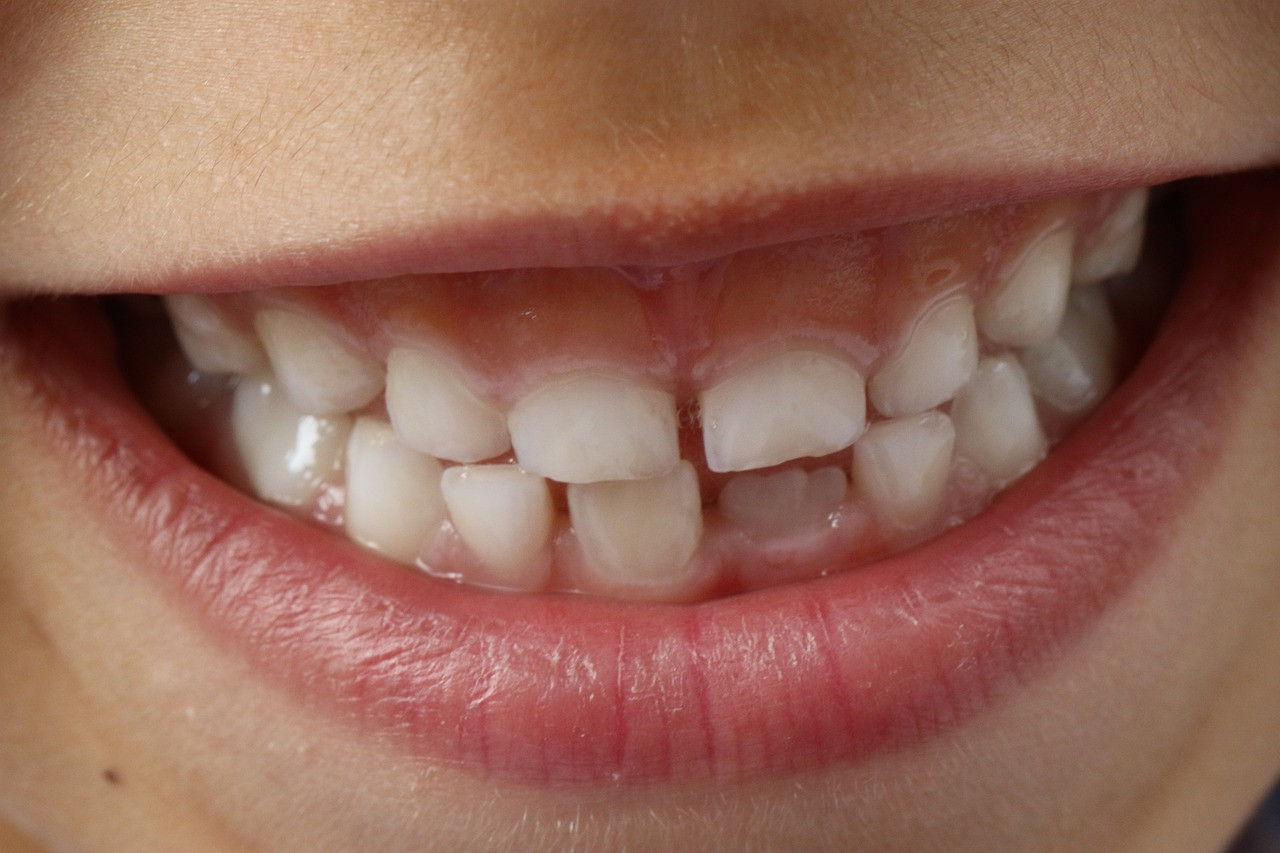
Instilling good oral health habits in children is crucial for their overall well-being and lifelong dental health. With the right guidance, you can make these habits enjoyable and rewarding. This blog explores practical tips for promoting excellent oral hygiene in children, including the use of Young Living’s KidScents and Thieves products, and offers strategies for creating a positive and engaging oral care routine.
Why Oral Health Matters
Good oral health is essential not just for a beautiful smile but also for preventing tooth decay, gum disease, and other dental issues that can affect overall health. Establishing effective oral hygiene practices early on helps children maintain healthy teeth and gums and fosters lifelong habits.
Daily Oral Care Routine
A consistent oral care routine is the cornerstone of good dental health. Here’s how to build a comprehensive and enjoyable routine for your child:
1. Brushing Twice a Day
- Tools: Use a child-friendly toothbrush with soft bristles. This toothpaste is an excellent choice, formulated with safe, natural ingredients like essential oils. It has a mild taste and is free from harsh chemicals (like fluoride), making it ideal for kids. (Here's another that my older kids like. Here our some of our favorite toothbrushes: Bamboo regular, Bamboo with charcoal, Bamboo small, Bamboo for baby.
- Technique: Teach your child to brush for at least two minutes, covering all surfaces of the teeth and gums. Use a gentle, circular motion to protect their enamel and gums.
2. Flossing Daily
- Importance: Flossing removes plaque and food particles between teeth that a toothbrush can’t reach.
- How to Teach: Show your child how to use floss or floss picks gently. My favorite dental floss is infused with essential oils, adding a refreshing flavor while helping to reduce bacteria and plaque buildup.
3. Using Mouthwash
- Rinsing: Introduce this mouthwash for a refreshing, natural option. Its blend of essential oils helps cleanse the mouth and freshen breath without the harsh chemicals found in many commercial mouthwashes. I dilute it 50/50 for children between 2-6 yrs.
- How to Use: Teach your child to swish the mouthwash for about 30 seconds and spit it out. This can be done after brushing and flossing for a thorough clean.
4. Oil Pulling
- Enhancement: For older children (typically over 5), introduce oil pulling with a mild oil like coconut oil. If the child can handle it, add a drop of Young Living’s Thieves® essential oil blend to boost its beneficial properties.
- Duration: Start with a minute or two and gradually increase the time as they get used to the process. (Spit into the trash.)
5. Rinsing with Water
- Benefits: Encourage your child to rinse their mouth with water after meals and snacks to help wash away food particles and reduce the risk of cavities.
Healthy Nutrition for Oral Health
Diet plays a significant role in maintaining oral health. Here’s how to support your child’s dental health through nutrition:
1. Balanced Diet
- Focus: Ensure your child’s diet includes a variety of fruits, vegetables, lean proteins, and whole grains. Your child needs s variety of vitamins and minerals to maintain strong teeth.
- Avoid: Limit acidic and sugary foods and drinks, which can erode enamel and lead to cavities.
2. Limiting Sugar
- Impact: Sugar is a leading cause of tooth decay. Minimize sugary snacks and beverages in your child’s diet.
- Alternatives: Offer healthier snack options like fruits, vegetables, and nuts, which are less likely to cause cavities.
Hydration and Oral Health
Encourage Water Intake
- Benefits: Drinking water throughout the day helps rinse away food particles and bacteria, maintaining a cleaner mouth and reducing the risk of cavities.
- Tip: Make water the go-to beverage for your child. Avoid sugary or acidic drinks like sodas and fruit juices. Yes, I said it again!
Regular Dental Visits
Routine Check-Ups
- Frequency: Schedule regular dental visits every six months to ensure your child’s teeth and gums are healthy.
- Positive Experience: Choose a pediatric dentist who creates a welcoming and comfortable environment. Explain to your child why these visits are important and make them feel special afterward, perhaps with a small reward.
Making Oral Care Fun
Positive Reinforcement
- Encouragement: Praise your child for their efforts in maintaining good oral hygiene. Use a reward system, such as a sticker chart, to motivate them. Your reinforcement means more to them than anything else.
Leading by Example
Modeling Behavior
- Brush and Floss Together: Children learn by watching their parents. Brush and floss your teeth alongside your child to demonstrate proper technique and emphasize the importance of oral hygiene.
- Discuss Health: Talk about why oral care is essential and share any personal stories that highlight the benefits of good habits or the consequences of neglecting them.
Incorporating The Best Products
- Why It’s Great: This toothpaste is formulated specifically for children, using natural ingredients like essential oils. It’s fluoride-free, making it safe for kids to use without worry.
- Benefits: Its gentle formula cleans teeth effectively without the harsh chemicals found in many conventional toothpastes. The mild flavor makes brushing more pleasant for kids.
- Added Benefits: For older children and teens, consider Young Living’s Thieves Whitening Toothpaste. It combines the cleansing power of Thieves essential oil blend with gentle whitening agents, promoting a brighter smile and enhanced oral health.
- Use: This toothpaste is suitable for children who can handle the stronger taste and are looking for gentle whitening benefits without harsh chemicals.
- Refreshing and Cleansing: This mouthwash uses the power of Thieves essential oil blend to cleanse the mouth and freshen breath naturally.
- Safe for Kids: Formulated with natural ingredients, it’s a safe and effective option for older children who can swish and spit out the mouthwash without swallowing.
- Enhanced Cleaning: Infused with Thieves essential oil blend and peppermint, this dental floss provides a refreshing taste and helps to effectively remove plaque and food particles.
- Use: It’s an excellent tool for teaching kids the importance of flossing and making the process enjoyable with its pleasant flavor.
-Bamboo toothbrushes offer a sustainable and eco-friendly alternative to conventional plastic toothbrushes. Made from natural, biodegradable bamboo, they significantly reduce plastic waste, which is a major environmental concern. Bamboo is a fast-growing, renewable resource that doesn’t require pesticides or fertilizers, making it an environmentally friendly choice. Additionally, bamboo toothbrushes often have soft bristles that are gentle on gums and teeth, making them suitable for both children and adults. By choosing bamboo toothbrushes, you're making a small yet impactful decision to protect our planet while maintaining excellent oral hygiene.
By integrating these practices and products into your child’s daily routine, you can help them develop strong, healthy teeth and a lifetime of great oral habits. Remember, the key is to make oral care a positive, engaging, and regular part of their day. With the right approach, your child can look forward to a future of bright, healthy smiles!
---
Sources:
- "KidScents® Toothpaste - Natural Fluoride-Free Toothpaste," Young Living, (https://www.youngliving.com/en_US/products/kidscents-toothpaste)
- "Thieves® Essential Oil Blend," Young Living, (https://www.youngliving.com/en_US/products/thieves-essential-oil-blend)
- "Thieves® Whitening Toothpaste," Young Living, (https://www.youngliving.com/en_US/products/thieves-whitening-toothpaste)
- "Thieves® Fresh Essence Plus Mouthwash," Young Living, (https://www.youngliving.com/en_US/products/thieves-fresh-essence-plus-mouthwash)
- "Healthy Habits for Healthy Kids," American Dental Association, (https://www.ada.org/resources/community-initiatives/kid-s-corner)
My blogs contain some affiliate links.
Any purchase made is a blessing to my family at no extra cost to you!
Thank you for supporting us!


Introducing children to good oral hygiene practices early on sets the foundation for lifelong healthy habits. One such practice is oil pulling, an ancient Ayurvedic technique that can be adapted for children to support their oral health. This blog will guide you on how to safely and effectively incorporate oil pulling into your child's routine and highlight its potential benefits.
What is Oil Pulling?
Oil pulling involves swishing a tablespoon of oil in the mouth for 10-20 minutes to cleanse and detoxify the oral cavity. For children, the practice can be modified to suit their comfort and safety needs. Typically, coconut oil, which has a mild taste and antimicrobial properties, is preferred for its ease of use with kids.
Why Consider Oil Pulling for Children?
Oil pulling can provide several benefits for children's oral health:
1. Reduces Plaque and Bacteria: Regular oil pulling can help remove bacteria and reduce plaque build-up, promoting healthier gums and teeth.
2. Prevents Cavities: The antibacterial properties of oils like coconut oil can help prevent cavities by reducing the oral bacteria that contribute to tooth decay.
3. Freshens Breath: Oil pulling can effectively combat bad breath by removing odor-causing bacteria from the mouth.
4. Soothes Inflamed Gums: It can help reduce inflammation and soothe tender gums, which is particularly beneficial for children with gingivitis or those who have lost their baby teeth.
How to Introduce Oil Pulling to Your Child
1. Explain the Benefits: Help your child understand why oil pulling is beneficial. You can explain how it helps keep their mouth clean and their breath fresh, making it an exciting part of their daily routine.
2. Choose the Right Oil: Start with a mild, pleasant-tasting oil. Coconut oil is often the best choice because of its subtle flavor and texture.
3. Use a Small Amount: Begin with a teaspoon of oil rather than a tablespoon. This smaller quantity is more manageable for children.
4. Swish for a Short Time: Encourage your child to swish the oil for just 2-5 minutes at first. As they get used to the practice, you can gradually increase the duration up to 10 minutes.
5. Make it Fun: Turn oil pulling into a fun activity by incorporating games or storytelling. You can make it a part of their morning routine, perhaps while watching a cartoon or reading a book.
6. Supervise the Process: Always supervise your child during oil pulling to ensure they don't swallow the oil and to help them spit it out properly.
7. Spit Safely: Teach your child to spit the oil into a trash can or a tissue rather than the sink to avoid clogging the plumbing.
8. Rinse and Brush: After spitting out the oil, have your child rinse their mouth with warm water and then brush their teeth as usual.
Safety Tips for Oil Pulling with Kids
- Age Appropriateness: Oil pulling is generally suitable for children over the age of 5 who can understand and follow instructions on not swallowing the oil.
- Monitor for Sensitivities: Watch for any signs of irritation or sensitivity, especially if using oils with strong flavors or essential oils.
- Keep it Simple: Stick to simple, single oils like coconut or sesame oil.
Frequently Asked Questions
Q: Is oil pulling safe for children with braces?
A: Yes, oil pulling is safe for children with braces. It can help keep the mouth clean and reduce bacteria that can build up around the braces.
Q: How often should my child oil pull?
A: Start with 2-3 times a week and see how your child adapts. If they enjoy it and it becomes part of their routine, daily oil pulling can be beneficial.
Q: Can my child swallow the oil?
A: It's important to teach your child not to swallow the oil. If they accidentally swallow a small amount, it’s generally not harmful but try to minimize this.
Q: What if my child doesn’t like the taste of the oil?
A: Experiment with different oils to find one that your child prefers. Coconut oil is usually a favorite among kids for its mild, slightly sweet taste.
Q: Can oil pulling replace brushing and flossing?
A: No, oil pulling should complement regular brushing and flossing, not replace it. It is an additional step to enhance oral hygiene.
For more advanced oil pulling options, go here.
---
Encouraging Healthy Oral Habits in Children
Incorporating oil pulling into your child's oral care routine can provide significant benefits and set the stage for a lifetime of healthy habits. Make it a fun, positive experience, and soon, taking care of their teeth could become one of their favorite parts of the day! Building a strong foundation of oral hygiene habits is crucial for your child's health. Here are a few more tips on how you can encourage good practices:
1. Set a Routine: Establish a consistent daily oral care routine. Encourage your child to brush their teeth twice a day and floss regularly. Make these activities a non-negotiable part of their day, like bedtime or mealtime.
2. Lead by Example: Children often mimic their parents. Brush and floss your teeth alongside your child to show them the importance of oral care.
3. Use Fun Tools: Invest in colorful, kid-friendly toothbrushes and nontoxic, but fun toothpaste to make brushing more enjoyable. Electric toothbrushes with timers can also add excitement and ensure they brush for the recommended two minutes.
5. Positive Reinforcement: Praise your child for good brushing and flossing habits. Use a reward chart where they can earn stickers or small rewards for consistent oral care.
6. Make Dental Visits Fun: Choose a pediatric dentist who makes dental visits a positive experience. Explain to your child why these visits are important and celebrate after each visit.
7. Healthy Diet Choices: Encourage a diet rich in fruits, vegetables, and whole grains while limiting sugary snacks and drinks. A balanced diet supports good oral health.
8. Educate on the Importance of Oral Health: Teach your child about the consequences of poor oral hygiene, such as cavities and gum disease, in an age-appropriate way. Understanding the "why" can motivate them to take care of their teeth.
9. Encourage Regular Water Intake: Drinking water helps wash away food particles and keeps the mouth hydrated, which is vital for maintaining good oral health.
10. Limit Sugary Snacks and Drinks: Reducing sugar intake can prevent tooth decay. Encourage healthier alternatives like fruits, vegetables, and nuts,.
For more on creating healthy oral habits, go here.
---
Sources:
- "Oil Pulling for Kids: What Parents Need to Know," Verywell Family, (https://www.verywellfamily.com/oil-pulling-for-kids-5194425)
- "Oil Pulling for Children: Benefits and Safety," Natural Living Family, (https://naturallivingfamily.com/oil-pulling-for-children/)
- "Encouraging Good Oral Hygiene in Children," American Dental Association, (https://www.ada.org/resources/community-initiatives/kid-s-corner)
My blogs contain some affiliate links.
Any purchase made is a blessing to my family at no extra cost to you!
Thank you for supporting us!

Navigating the bustling energy of toddlerhood can mean a whirlwind of activity that, while exhilarating, often leaves parents in need of some strategic nutrition planning to keep up. The essence of keeping these little ones thriving hinges on introducing a diverse range of foods that not only delight their taste buds but also bolster their growth and vitality. By incorporating colorful fruits and vegetables, whole grains for sustained energy, and lean proteins to support muscle development, parents can ensure their toddlers are well-equipped for their adventures.
Leaving processed snacks in the dust and embracing homemade, wholesome options can drastically improve a toddler's diet. Crafting quick, healthy snacks like freshly cut fruits and veggies, and integrating nuts and seeds for healthy fats, not only nurtures their bodies but also makes nutritious eating a convenient choice. Ensuring toddlers stay hydrated with their own sippy cups filled with water plays a crucial role in maintaining their overall well-being amidst their playful antics.
Adapting to the unique needs of tiny, yet surprisingly voracious appetites involves serving balanced meals in portion-controlled sizes and making sure to feed them frequently. By presenting meals that are visually appealing and full of variety, parents can spark curiosity and excitement towards trying new foods. This approach simplifies mealtime and lays the groundwork for instilling healthy eating habits that will benefit toddlers long into their future, making the journey through toddlerhood both healthy and joyful.
Read more...
Communication Pros: Reading out loud helps kids develop their language skills as they soak up new words, sentence structures, and even grammar skills. This enhances their communication abilities. and they'll be chatting up a storm in no time!

The unhealthy nature of the school lunch program plays a significant role in the rising rates of childhood obesity. A study published in JAMA Pediatrics found that students who regularly consumed school lunches had a higher likelihood of being overweight or obese compared to those who brought their own lunches from home. This correlation highlights the urgent need for healthier options within school cafeterias.
Read more...

